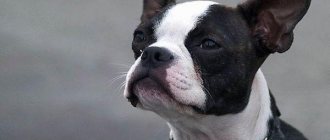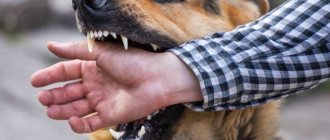Sled dog racing just got faster
It is impossible not to note the dynamics of the development of the races, not only in terms of the scale of the competition itself, but also from the point of view of the physical development of the dogs themselves.
The first dog race in Alaska took place in 1973 . It took the tailed athletes and their owners about twenty days to cover a distance of 1049 miles (about 2000 km). Our furry contemporaries today run the same distance twice as fast - in about 10 days . If in the first races the weakest teams finished approximately on the 32nd day of the competition, but now the average time does not exceed 13 days .
The Iditarod race record was set by Mitch Seavey two years ago. His dogs ran the distance in 8 days.
Basic design of a dog sled
For dogs taking part in racing, special equipment is provided, each component of which ensures the safety and comfort of animals in difficult conditions of competition and training:
- Sled dogs have their own special nylon collars. They are made of light and durable material in such a way as not to rub off the animal's fur;
- A harness is necessary to properly distribute the load on the dog. Special models are also produced for harnesses;
- Pull is a cord connecting the athlete and the dogs. Its length is about 2–3 meters;
- One of the most important components in the design of the sled is the shock absorbers, which protect the dogs from excessive loads.
Iditarod - Race of Mercy
In 1925 , dogs saved many lives. the small town of Nome , and the nearest vaccine supplies were in Anchorage . Due to the frost and blizzard, it was only possible to overcome the distance by dog sled. Thanks to brave pets and their owners, many residents of Nome were saved from death . The “Race of Mercy” became a kind of beginning of the Iditarod race.
Today, the race is far from pursuing charitable goals. The winner of the world's most extreme competition receives up to $70,000 and a truck. Another $550,000 is shared between the next 13 teams that arrive. A special prize is also provided for the last participant to finish.
There are a huge number of winter sports, but one of the most unusual and extreme is sled dog racing. Lovers of vivid sensations can experience all the delights of such an activity without even leaving Russia.
This sport is quite old, because the first dog sled competitions were held back in 1850. America is the birthplace of such an exotic sport. However, initially dog sleds were used exclusively as a fast way of transportation, but not as a competition. Dogs helped people search for precious metals during the Gold Rush. Despite the fact that at first such races were popular only in Alaska, over time they spread throughout the world. And Russia is no exception, because there are quite a lot of places where you can fully experience the thrill of riding such an unusual vehicle.
Here are the main places for this type of activity:
- Orenburg . In the city there is a kennel called “Orenburg Huskies”. This is where you can ride a sleigh pulled by these smart and incredibly active dogs. Huskies are extremely friendly and friendly animals, which you can thank after the ride with a treat purchased directly on the territory of the nursery. The cost of a short walk will cost 500 rubles;
- Moscow region . There is a husky park here where vacationers will spend an unforgettable day. The variety of entertainment is so great that there will definitely not be time to get bored. In addition to sledding, you will get acquainted with the culture of the northern peoples, taste their traditional desserts, and take part in a grandiose purification ritual that takes place near a huge fire. The cost of such an excursion day is 2500 rubles. For a sleigh ride you will have to pay separately 1000 rubles;
- Tsaritsyno Park . Even children can ride dog sleds in this park. A ticket for an adult will cost 600 rubles, a child’s ticket – 300 rubles. After skiing, you can visit the dog park and get to know the friendly animals better;
- Park "Fairy Tale" . This park is located in the Moscow region and can easily compete with the above in terms of attendance. There are always a lot of guests here. And not in vain, because in the park you can not only ride a dog sled, but also visit the shaman’s home, observing his mysterious rituals. The price of such a program is 1,400 rubles per person.
In addition to the cities listed, there are other places in Russia where dog sledding is a common activity. Such places include Novosibirsk, Karelia, Yakutia and Kamchatka. This is where you can feel like a real musher.
Before you get into the sleigh, you should understand that such a walk is not only a sea of positive emotions, a rush of adrenaline and drive. Above all, skating is not an easy physical challenge. Therefore, anyone who prefers to spend a couple of days practicing this type of winter sport should take care of their own physical fitness in advance.
Dog boots are an integral part of equipment
All runners' paws must be in boots - this is the law . It's not even that it's very cold in Alaska. The main reason is caring for the dogs. The track surface is far from ideal and dogs' paws can easily get injured on the ice. To avoid cuts and bruises, each dog should have at least 8 sets of spare boots.
Mostly, mushers sew shoes for racers with their own hands. This way, each shoe will fit your pet perfectly without causing any discomfort.
Racing dynasties
Sled dog racing is often a family affair. Father-son and brother-brother races are not uncommon in the Iditarod .
Among the racing dynasties, the youngest winner Dallas Seavey , whose team came first in 2012 . father took part in the race , receiving the title of oldest champion at fifty-three years old. But the family’s merits do not end there. grandfather was the third finalist in the very first race.
Details
Equipment for sled sport is always a very serious and expensive issue for any musher. This is, of course, due to the fact that it cannot simply be purchased at a sports store; most of the harness for any type of racing is made to order and according to the measurements of a particular participant and the dogs from his pack. The most important element in the equipment, without the correct fit of which the dog will receive an uneven load on the thoracic musculoskeletal system, is the harness.
It is customized to fit each dog and is made from durable nylon that can withstand any type of racing. The harness is connected to a collar, which looks like a half-choke and acts as a lock for the dog at a specific place in the row. The collar and harness are connected to the main harness by durable carabiners, which are made of durable alloys, which, as a rule, are not afraid of frost. The entire dog bunch is attached to a base - a pull rod made of nylon and looking like an ordinary strong cable.
To stabilize and soften the load on the dog’s spine, a shock absorber is installed that absorbs the load at the base of the pull. And, of course, when the race lasts more than one day and the musher stops to rest with his pack, he uses a leash, which fixes the radius of the dogs on some post or tree.
The leash is perhaps the only piece of equipment for sledding that rarely is ordered individually, since the dogs rest in the leash and it does not place any load on their body.
There are no general rules for sled dog racing, since they are different for each distance, each specific competition and each type. Even as such, there are no breed restrictions for dog breeds; in some snowless disciplines, the main thing is that the dog survives the race, and you can enter as a participant even with a shepherd dog.
The World Sledding Championship has been held since 1990 and includes a number of disciplines that are approved by the International Sledding Federation. The location and specific dates of the event are also determined by the federation.
But due to the popularity of the races, their diversity and slowly but surely growing popularity, many countries have their own championships and cups in sled dog racing, which are sometimes in no way inferior to the World Championships either in terms of entertainment or in the number of participants. For example, in our country there are all the conditions and opportunities to develop in this direction, and you can apply for both regional and all-Russian competitions.
The largest and most famous sled dog races in Russia include:
- Dryland competitions in the Moscow region in the Volkush quarry. Athletes over 12 years of age and dogs over one year old can take part in the “Following the Yellow Leaves” competition. Participation is recommended for those who, in principle, want to learn what sledding competitions are, meet like-minded people and find a regional club with which they can start practicing more professionally. Race disciplines: canicross, bijoring, scootering, karting.
- “Silver Boat” is held in the Kostroma region, in the village of Nikolskoye in December. Participants from 9 years old can register and choose the category of skyjoring or sled racing. You can participate with any breed of dog, and the tracks start from 500 meters and up to 20 km, but only an experienced musher can take part in such a long distance. The competition is aimed at popularizing sledding sports.
- In Karelia, in January, races for professionals “On the Sampo Land” are held. Participating dogs can be of any breed, but the athlete must be over 18 years old. The race takes place within the framework of skyjoring and classic sledding. The routes in Karelia are of three lengths - 6 km, 10 km and 40 km for the most experienced.
- Sled racing over a distance of 500 km is held in Chukotka. The competition is called “Northern Hope”, mushers over 18 years of age are allowed, and for dogs the age limit is no younger than 1.5 years.
- “Beringia” - probably every Russian knows the name of this race, since this is the most famous competition within the framework of sled dog sledding, held in Chukotka, and athletes from all over the world come to participate in it. The course stretches for 1,500 km, only athletes over 18 years old with dogs over 18 months are allowed. Participants enter the competition only on sleds. This competition most often involves only special breeds that were bred in nurseries specifically for a sporting future.
INTERESTING: “Beringia” is listed in the Guinness Book of Records as the longest route - previously the length of the track was 1980 km.
IMPORTANT: do not be upset that there are no full-scale competitions in your region. You can start practicing riding disciplines in all regions of Russia, since clubs for individual disciplines exist in all regions, although they may not be popularized among the general population. Either the kennel club or the sled breed club can help you with your search.
Conversations with dogs
You understand that in order to successfully overcome the distance, dogs must understand not only the commands “lie down”, “voice” and “come give me a treat”. Tail riders are required to see the difference in directions and immediately follow the musher’s instructions such as “slow down”, “ignore”, “forward”, “overtake”.
Dog breeds
There are no regulations regarding the breeds allowed for dog races in official competitions. Four-legged friends of any breed, including outbred ones, can participate. For a successful race, endurance in long-distance running, the ability to maintain high speed on loose and shaky sections of the track, non-conflict with other dogs, good tolerance of temperature changes and training are important.
Traditionally, teams with strong, hardy and obedient dogs are successful in competitions. Most often, mushers (riders) choose the following breeds as draft power:
- Alaskan Malamute;
- Siberian Husky;
- Greenland dog;
- Samoyed husky;
- Eskimo husky;
- Kamchatka sled dog;
- Norwegian sports mestizos;
- Chukotka sled dog;
- Chinook
In some cases, the organizers require supporting documents about the age of the dogs, not allowing pets of an age that does not match the level of difficulty of the route to participate. To obtain more resilient competitors, some riders are seriously engaged in selection, raising a mixture of hounds and hunting dogs.
Meals and rest for participants
16 in the sled . To cover the enormous distance, each animal must have excellent physical fitness and good nutrition. On average, each furry run receives 10,000 - 12,0000 calories per day to replenish lost energy.
During the dog races, stops are provided so that each animal can enjoy warm food and rest on soft bedding. During rest, mushers massage their pets' tired paws and rub medicinal ointments .
Directions
In modern conditions, sledding sport has several disciplines:
- skijoring - 2 dogs and a skier take part here:
- pulla - 1-2 dogs pull a sled with weight, and they are accompanied by a skier;
- sled race - can last more than one day, depending on the distance;
- bikejoring - 1-2 dogs participate together with the cyclist;
- Canicross – 1 dog and 1 runner cover a set distance.
There are also differences in the length of the distances:
- sprint (from 40 km)
- medium distances (41-500 km)
- long distances (over 500 km)
Relationships between dogs and racers
It’s not for nothing that the Iditarod is called the most extreme competition. Blizzards, terrible frosts, tracks on ice, snow, mud or off-road - not every team can endure all this.
Sled dog racing is almost criticized by animal rights activists. Doping scandals also add fuel to the fire when opiates are found in the blood of racers.
But you can't win the Iditarod without loving dogs. Many travelers come to Alaska to see how people interact with their pets. The musher feels each of the 16 wet noses .
Some of the team members are tired, some are sick, some are sad. The owner must monitor not only the movement tactics and placement of the dogs, but also the emotional and physical state of each ward.
During races, mushers regularly get off the sled to make it easier for the animals to pull the team. Often, owners do not sleep during rest periods: they massage their paws, shelter their pets from the wind and snow so that they do not freeze while sleeping, and put on clothes knitted with their own hands.
Sled dog racing is a dangerous competition of incredibly cute tailed animals. If you are passionate about this sport or like to bet on wet-nosed racers, welcome to the 1xStavka bookmaker.
When registering at an official office in the Russian Federation with the promo code 1xs_1177 , each newcomer will be entitled to an increased welcome bonus of up to ₽8000 . We wrote about how to take advantage of the offer here.
History of dog sleds
The earliest historical evidence of the use of dogs as draft power was found at the end of the 20th century - archaeologists found the remains of a team, the age of which was estimated at 7-8 thousand years. People started talking about “sledding sport” in the mid-19th century - during the gold rush in North America, dog sledding became especially popular, and in 1886 official competitions were held in Alaska, in the city of Saint Paul - during the carnival races were held among local residents and guests of the holiday.
Dog sledding gained wide popularity in the 1930s, when multi-day competitions were held as part of the Winter Olympics in Lake Placid (New York, USA). The participants had to cover 25 miles (more than 40 km) per day; Mil Goddard won. Now the variety of racing disciplines is much greater - from 1 km sprint races to multi-day “expeditions”.










